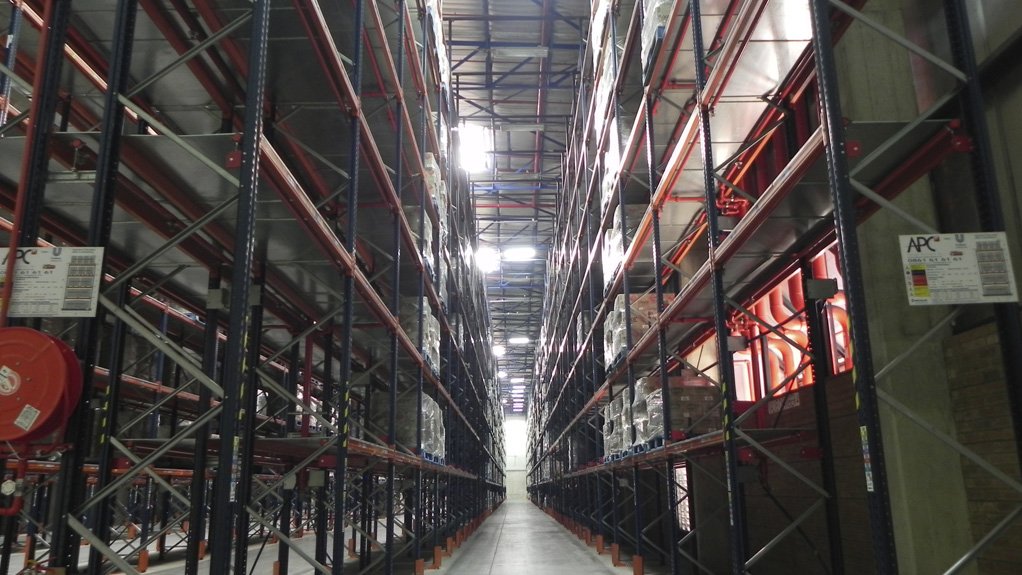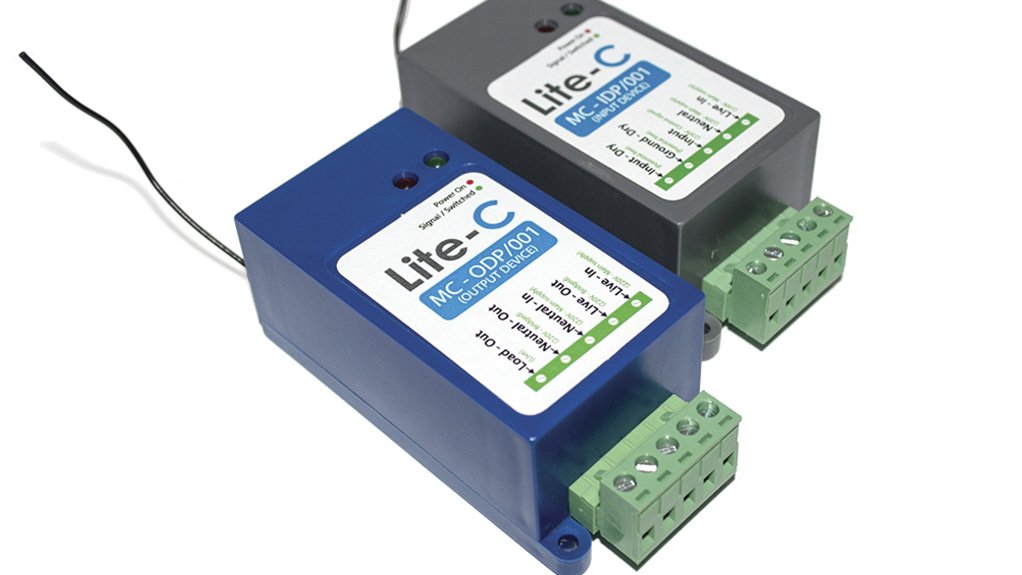Lite-C sensors allow for reduction in electricity bills



AFTER INSTALLATION Lite-C sensors operate using radio frequency technology that allows input devices to communicate with and control output devices without the need for cabling over long distances
INPUT AND OUTPUT DEVICES The input signal can be from various sources but most commonly from an occupancy sensor
Energy efficiency solutions provider Magnet Energy has developed, designed and manufactured the Lite-C wireless lighting control system, which allows for a reduction in electricity bills of up to 43%.
The Lite-C units – manufactured in Johannesburg – are suitable for installations in commercial buildings, warehouses, distribution centres and parking lots. They use radio frequency (RF) technology that enables input devices to communicate with and control output devices up to 200 m away without the need for cabling.
“The system is easily integrated into light fittings for automation purposes and it forms part of the company’s range of energy-saving solutions,” says Magnet Energy – a division of Magnet Group – project head Ryan Groger.
He says Magnet’s team of lighting specialists, consisting of four lighting engineers and two full-time designers, has extensive experience in identifying energy-saving opportunities and implementing appropriate ecofriendly solutions to reduce wasted electricity.
Lite-C Features
The Lite-C system’s occupancy sensors are coupled with wireless controllers that make it well suited to operation at height, detecting movement of an object at floor level such as a forklift truck in a warehouse, and enabling communication with other devices.
At this point, the first bank of lights automatically switches on. Motion of the object is then detected by the second sensor, triggering the next set of lights to turn on while the previous lights remain active.
“If no movement is detected by the sensor after a certain time, the lights switch off automatically. The Minimum Lux sequence – a software option for the control of lights that are left on for enhanced safety – then becomes active,” explains Groger.
With this plug-and-play system, the input signal can be from various sources, such as photocells, magnetic contacts or any electrical equipment that can send signal to input units; however, most commonly, it originates from an occupancy sensor.
The addressing of the input and output units is done through a ten-channel dip switch configuration, which allows for the unit to be preprogrammed off site or at ground level prior to installation.
The Lite-C sensor units are either programmed at the manufacturing site, by the contractor or by a Magnet technician. These units can also be preprogrammed manually or through using software by personnel who have received adequate training.
“Not all the products come with software capabilities, the application determines whether we use software or not. We have generated our own software system which is compatible with all computers,” says Groger.
Magnet has in-house technicians and specialists who support the product, and the company provides training on these products, in conjunction with contractors, to ensure that the units are installed correctly.
“Magnet provides backup service and guarantees, in other words, the units are serviced and can be maintained by Magnet’s technicians. We also offer our clients a service level agreement should they wish us to maintain the control system,” he adds.
“There are two options available for the Lite-C unit – a self-configurable system for manual setup and a software configurable system with a real-time clock, which is completely programmable and adjustable. Modifications can be made without the need for rewiring or using access equipment at height,” Groger concludes.
Article Enquiry
Email Article
Save Article
Feedback
To advertise email advertising@creamermedia.co.za or click here
Comments
Press Office
Announcements
What's On
Subscribe to improve your user experience...
Option 1 (equivalent of R125 a month):
Receive a weekly copy of Creamer Media's Engineering News & Mining Weekly magazine
(print copy for those in South Africa and e-magazine for those outside of South Africa)
Receive daily email newsletters
Access to full search results
Access archive of magazine back copies
Access to Projects in Progress
Access to ONE Research Report of your choice in PDF format
Option 2 (equivalent of R375 a month):
All benefits from Option 1
PLUS
Access to Creamer Media's Research Channel Africa for ALL Research Reports, in PDF format, on various industrial and mining sectors
including Electricity; Water; Energy Transition; Hydrogen; Roads, Rail and Ports; Coal; Gold; Platinum; Battery Metals; etc.
Already a subscriber?
Forgotten your password?
Receive weekly copy of Creamer Media's Engineering News & Mining Weekly magazine (print copy for those in South Africa and e-magazine for those outside of South Africa)
➕
Recieve daily email newsletters
➕
Access to full search results
➕
Access archive of magazine back copies
➕
Access to Projects in Progress
➕
Access to ONE Research Report of your choice in PDF format
RESEARCH CHANNEL AFRICA
R4500 (equivalent of R375 a month)
SUBSCRIBEAll benefits from Option 1
➕
Access to Creamer Media's Research Channel Africa for ALL Research Reports on various industrial and mining sectors, in PDF format, including on:
Electricity
➕
Water
➕
Energy Transition
➕
Hydrogen
➕
Roads, Rail and Ports
➕
Coal
➕
Gold
➕
Platinum
➕
Battery Metals
➕
etc.
Receive all benefits from Option 1 or Option 2 delivered to numerous people at your company
➕
Multiple User names and Passwords for simultaneous log-ins
➕
Intranet integration access to all in your organisation
















